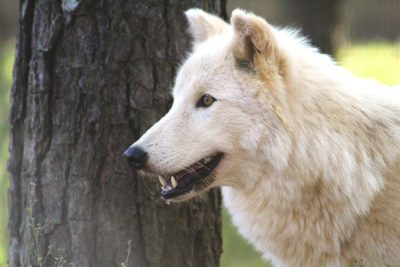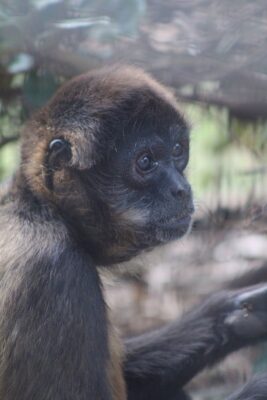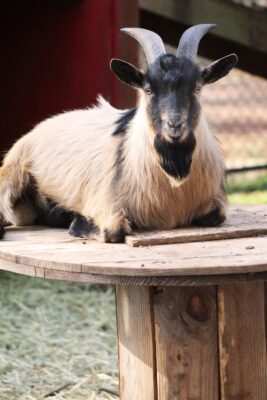Wild Animal Safari is your gateway to adventure. View our animal gallery in Pine Mountain, GA, to catch a preview of what is waiting for you at the park.
Walkabout

American Black Bear
Scientific Name: Ursus americanus
IUCN status: Least Concern
Origin: North America
Fun Fact: Black Bears are very intelligent and have an excellent long-term memory. They have better eyesight and hearing than humans. Their keenest sense is their sense of smell. It is about seven times more sensitive than a dog's.

Arctic Wolf
Scientific Name: Canis lupus arctos
IUCN status: Least Concern
Origin: Arctic regions of Greenland and North America
Fun Fact: Arctic wolves have a mechanism that maintains their paws at a temperature lower than the body core. Blood going into their paws heats blood that is leaving, preventing their core from getting cooled by the loss of heat through their feet.

Geoffroy's Spider Monkey
Scientific Name: Ateles geoffroyi
IUCN status: Endangered
Origin: much of Central America
Fun Fact: A study performed in 2007 concluded Geoffroy's spider monkey were the third most intelligent nonhuman primate. They were behind only orangutans and chimpanzees, and ahead of gorillas and all other monkeys.

Goat
Scientific Name: Capra aegagrus hircus
IUCN status: Least Concern
Origin: It was domesticated from the wild goat of Southwest Asia and Eastern Europe
Fun Fact: In 2011, there were more than 924 million goats living in the world.

Liger
Scientific Name: Panthera leo × Panthera tigris
IUCN status: No Conservation Status
Origin: Zoo-bred hybrid
Fun Fact: Ligers are the offspring of a male lion and a female tiger. The largest ligers often grow to be more than 11 feet, and weigh more than 900 pounds. There are reports of some individuals weighing more than 2,200 pounds.

Mountain Coatimundi
Scientific Name: Nasua nasua
IUCN status: Least Concern
Origin: Tropical and Subtropical South America
Fun Fact: Females typically live in large groups called bands. Males are usually solitary. Males were originally thought to be a separate species due to the different social habits, and were called coatimundis.

New Guinea Singing Dog
Scientific Name: Canis dingo hallstromi
IUCN status: Least Concern
Origin: New Guinea Highlands
Fun Fact: They were thought to be extinct in the wild until 2012. They were caught on camera, and researchers were able to confirm they were wild New Guinea Singing Dogs

Peafowl
Scientific Name: Pavo cristatus
IUCN status: Least Concern
Origin: Across the Indian subcontinent
Fun Fact: The Indian peafowl's "train" contains more than 200 feathers, while the actual tail has only 20 feathers and nearly all of these feathers end with an elaborate eye spot.

Tiger
Scientific Name: Panthera tigris
IUCN status: Endangered
Origin: South Asia and Southeast Asia, and also the Russian Far East and China
Fun Fact: Tigers are very good swimmers and often soak in ponds, lakes, and rivers. This helps them to keep cool in the heat of the day. They are even able to kill prey while swimming.
